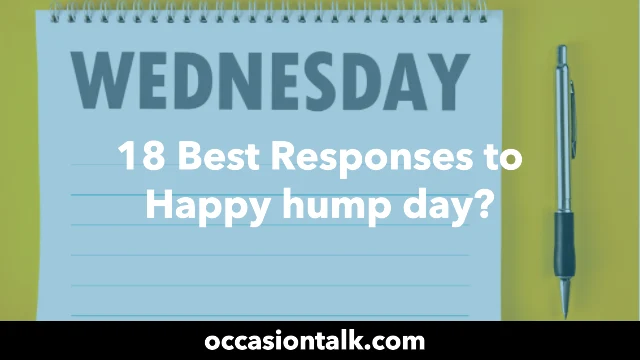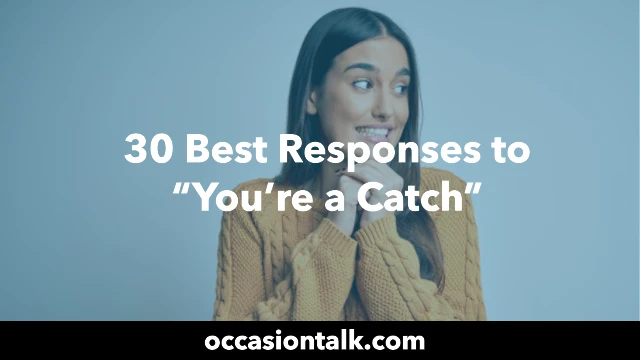60 Best Responses to “Are You Free”
In our fast-paced lives, we often receive messages asking if we are available to meet, chat, or take on new tasks.
While it seems straightforward, responding to the question “Are you free?” can vary greatly depending on the context and our relationships with others.
Whether in a professional setting, among friends, or when you simply want to convey your unavailability without offending the person reaching out, this guide provides tailored responses to suit different scenarios.

Below, we have a list of responses to “Are You Free” for various situations. Following the list, we also provide tips on how to craft your responses.
How do you reply when are you available
For Social and Casual Contexts:
- Sure, what’s up?
- In a bit, just finishing something.
- Yeah, got some time to chat!
- Not right now, but later for sure.
- Yup, free as a bird. Let’s do something.
- Give me 10 and I’m all ears.
- Today’s packed. Tomorrow?
- Just chillin’. Come over?
- I can make time. Need me?
- Kinda swamped, but for you, I can spare a few.
You can also check: 45 Ways to Ask Someone if they are Free to Meet You
For Professional or Formal Enquiries:
- I’ll need to check my calendar. Can I get back to you shortly?
- I have a small window of availability today between 2-3 PM for a quick discussion. Would that time work for you?
- My schedule is quite packed today, but I have an opening tomorrow.
- Could you provide more details on this? I’d like to see where I can fit this in.
- I am available after 4 PM today, does that suit your schedule?
- Currently, I’m tied up. Would next week be a possibility?
- I can make myself available for you. When do you need to meet?
- I’m in meetings all day today, but I have some time tomorrow morning.
- I’m finishing a few tasks. What about connecting in an hour?
- Let me wrap up what I’m working on, and I’ll be free.
For Personal and Friendly Exchanges:
- Hey! Juggling a few things, but I can chat later. What time are you thinking?
- I’m a bit swamped at the moment, but I’d love to catch up. Free after five?
- For you, always! When are we thinking?
- I’m around this afternoon. Coffee and a chat?
- Got plans today, but how about we link up this weekend?
- I can squeeze in a quick call now, what’s up?
- Let me finish up here, and I’m all yours!
- I need to check a few things, but I think I can shuffle some stuff around.
- Just on the tail end of something. Give me 20 minutes?
- I can be free with a bit of notice—what do you have in mind?
How do you reply to when are you not available
- Unfortunately, I have a full schedule today. Can we aim for later this week?
- I’m currently on a deadline and won’t be available until it’s met.
- My calendar is quite tight. Could we schedule for next week?
- At this time, I’m unable to commit to new engagements.
- Due to prior commitments, I’m booked for the day. How about next Monday?
- I’m out of the office until [date]. Let’s touch base upon my return.
- I won’t be free until after the current project wraps up.
- My apologies, but I’m not able to take on any more at the moment.
- I’m tied up with prior arrangements all week. Perhaps we can reconnect next week?
- My schedule won’t allow for that. I’ll reach out when things clear up.
You can also check: 25 Best Responses to a Declined Invitation
- Hey there! My schedule is jam-packed today. Could we find a time next week that works for both of us?
- I’d love to catch up but I’m currently swamped with tasks. How does getting together on the weekend sound?
- Oh, I wish I could! I’m tied down with prior commitments all day. I’m free on Thursday, though shall we pencil something in?
- I’m so flattered you thought of me! Unfortunately, I’m booked out today, but let’s make plans soon. What about next Friday?
- Just looked at my calendar and it’s a bit of a jigsaw puzzle at the moment. Let’s sync up soon when it’s a bit less hectic.
- Thanks for reaching out! I’ve hit a bit of a busy patch and need to focus on this for now, but I’m keen to hang out as soon as I can. I’ll message you.
- Appreciate the invite, but I’m under a bit of a deadline cloud today. Can we rain check for a sunny day next week?
- I’m babysitting the chaos monster (my pet) today. How about we plan something fun for when I’m less fur-occupied?
- Just when I thought I could take a breather, a wild to-do list appeared! Let’s aim for a more relaxed time—I’m sure we can find a little oasis in our schedules.
- I’m currently navigating the adventure that is life-admin, but I’m definitely in for a rain check. Your timing is usually perfect, so you tell me when!
For Social and Casual Contexts
- Got plans already. Tomorrow?
- Today’s a no-go. Next time!
- In the weeds. Chat soon?
- Booked solid. Free later this week?
- Full plate today, but I’m totally down for a hangout soon. How’s your schedule looking next week?
- Currently occupied, but I’ll get back to you ASAP!
- Taking care of stuff at the moment. Let’s chat in a bit!
- Hey there! Can’t chat right now, but I’ll catch up with you later!
- Super busy day ahead. Can we aim for a catch-up another day?
- Swamped for now, but let’s plan something soon!
You may also like: 27 Best Responses to “Good, HBU”
Understanding the Context
The three words, “Are you free?” can seem innocent and straightforward at first glance, but the undercurrents of this question are shaped by context.
Recognizing the circumstances around which the question is asked is essential for crafting a suitable response.
Context includes not only the environment such as work, social, or public but also the relationship you have with the person asking, the tone in which the question is presented, and the timing of the request.
Importance of Contextual Clues
Before answering, take a moment to consider:
- Who is asking? Is it a boss, a co-worker, a friend, or a family member? Each role may warrant a different level of formality and openness in your reply.
- How are they asking? Is the inquiry made via email, text message, in-person, or over the phone? Written communication often requires more clarity as there are no visual or tonal cues to interpret.
- What is the tone? Tone can suggest urgency, casual interest, or even command. A cheerful, laid-back message might allow for a more humorous or relaxed response, while a serious tone may call for a straightforward and professional reply.
- When are they asking? Is it during business hours, late at night, or over the weekend? The timing can affect both your availability and the expected response time.
Quick Tips for Context Assessment
- Professional vs. Personal: In professional settings, lean towards formal and concise replies. In personal scenarios, you can afford to be more expressive or casual.
- Urgency: If the message seems urgent, prioritize a prompt reply, even if it’s to say you will provide a fuller response later.
- Cultural Norms: Be aware of cultural expectations and norms, especially when communicating across different regions or cultural backgrounds.
Tips for Building the Right Response
Once you’ve gathered the contextual clues, it’s time to build your response. Here are some steps to consider:
- Start with Acknowledgment: Acknowledge the request first. Even if you’re unable to fulfill the ask, a simple recognition can go a long way in maintaining goodwill.
- Clarity is Key: Be as clear as possible about your availability. If you are not free, provide a brief explanation if appropriate, and if possible, offer an alternative time or method for connection.
- Consider the Relationship Dynamic: Tailor your language and tone to match the nature of your relationship with the person. Friendly banter might be welcome in some contexts, whereas other situations may call for a more measured approach.
- Set Expectations: Especially in a professional context, it’s important to manage expectations. If you’re suggesting an alternative time, be sure that it’s feasible for you to commit to it.
- Be Respectful of Time: Whether you’re dealing with a superior, a colleague, or a personal contact, respect their time as well as your own. If you cannot engage in a full conversation, it’s courteous to say so rather than leave the person waiting or guessing.
Examples of Context-Driven Responses
- Professional Inquiry:“Thank you for reaching out. I’m currently tied up with a project and will be available after 3 PM today. Could we arrange our meeting for then?”
- Casual Ask from a Friend:“Hey there! I’ve got a lot on my plate right this second, but I’d love to chat. Can we connect after dinner tonight?”
- Urgent Request from a Family Member:“I’m in the middle of something, but I can sense this is important. Give me 15 minutes to wrap up, and I’ll be all yours.”
RELATED POSTS:
- How to Respond to Yo (22 Responses and more)
- 24 Ways to Say Can’t Wait to See What The Future Holds
- 48 Best Replies to Can We Talk Text
- 15 Best Responses to I Know You Miss Me
Final Thoughts
Understanding the nuances of communication is an art form that requires attentiveness and empathy.
The “Are you free?” question, while simple, is a perfect example of a query that needs to be navigated with care and consideration for the context.
Whether you’re responding to a close friend, a family member or a colleague, the key is to maintain a balance between being polite and being honest about your availability.
This approach not only helps in managing your time effectively but also in building strong and respectful relationships in both your personal and professional life.
Remember to stay mindful of the other person’s expectations and be ready to suggest alternatives that work for both parties when necessary.






